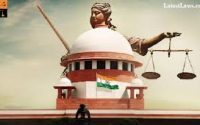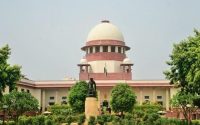In defence of the Supreme Court
Source:-https://indianexpress.com
In India, there is no institution that inspires greater awe and hope than the Indian judiciary. The Supreme Court being at the apex of the Indian judicial system, naturally inspires the greatest confidence and it is rightfully seen as the final frontier in the fight to secure justice. To say that no decision of the Supreme Court has ever been incorrect would be plainly wrong. Of course, there are times when the Supreme Court decides cases wrongly and in those cases it must suffer criticism.
Criticism is an inherent and inalienable part of free speech as guaranteed under Article 19(1)(a) of the Indian Constitution. Criticism serves to make its judicial delivery process even more robust and remains welcome as it is a healthy sign for any democratic institution. At this juncture, it is necessary to remember that criticism of judgments should be focused upon the judgment and not upon the judges. By focusing the criticism on the judges, the critics often indulge in ad-hominem attacks. We have seen more than one instance wherein the author of a judgment as opposed to the judgment has been pilloried on social media and mainstream media. These attacks are rhetorically sharp but logically flawed and do not further the cause of institutional improvement.
Since judges only speak through their judgments and not via forums outside courtrooms, there is an even greater duty for the Bar to rise up to the challenge and defend the judges against unwarranted criticism. As a young member of the Bar, I feel this is imperative since unfounded criticism can dim the legacy of judicial institutions and destroy public confidence in it.
The Supreme Court and particularly the incumbent Chief Justice of India (Justice S A Bobde) came under fierce attack for a comment made during court proceedings about the scope of Article 32 of the Indian Constitution. The CJI while holding court had commented that “we are trying to limit Article 32 petitions”. It is relevant to note that Article 32 of the Indian Constitution provides that writs can be filed in the Supreme Court for enforcement of fundamental rights. Critics latched onto this statement without paying attention to its context and claimed that the Supreme Court was destroying constitutional remedies through unfair adjudicatory processes. This opinion got amplified by social media accounts that were quick to condemn the Supreme Court for going against the vision of B R Ambedkar, as he had famously described Article 32 as being the heart and soul of the Constitution. The net result was that the Supreme Court had to face needless flak, especially when its observation had a strong basis in law.
The statement of the CJI is legally correct and in fact, furthers the cause of access to justice for several reasons. First, writs for the enforcement of fundamental rights can be granted by the Supreme Court and high courts alike. In fact the scope of powers available to high courts under Article 226 are wider than the ones available to the Supreme Court under Article 32. This is the case since Article 32 writs before the Supreme Court can solely be filed for the enforcement of fundamental rights whereas Article 226 writs before the high courts can be filed for the enforcement of fundamental rights and for any other purpose.
Second, it is incumbent upon the litigant to show the reason as to why it has chosen to ventilate its grievance before the Supreme Court and not before a high court. This is necessary to ensure that litigants do not rush to the Supreme Court at the earliest possible instance especially when they have the opportunity to secure relief from a lower judicial forum. This rule of practice is contained in a decision by the Supreme Court in PN Kumar v. MCD (1987).
Third, a case being adjudicated by the Supreme Court can be dismissed without a reasoned order and can no longer be challenged and it is fairly common for the Supreme Court to reject cases through crisp one liners such “heard and dismissed”. On the contrary, all decisions by high courts and other judicial forums must contain reasons for their verdicts so that the litigant knows the basis on which the claim was accepted or rejected. The absence of reasoning makes a decision amenable to reversal by a superior judicial forum.
Fourth, a rejection by the Supreme Court seals a case’s fate since it cannot be challenged before any other forum. However, by filing a writ petition before the high court, a litigant has multiple shots at securing justice. She can secure a relief before a Single Judge under Article 226, then take forward that proceeding before a Division Bench in intra court appeal also known as Letter Patents Appeal and finally test it before the Supreme Court via a Special Leave Petition under Article 136.
This is not to say that Article 32 writ petitions can never be filed. It is only that for Article 32 writs to be entertained, there must be a higher threshold. These reasons make it absolutely clear that a statement when taken out of context and without the benefit of knowledge about judicial precedents can cast a shadow on our finest institutions. It is imperative for some if not all of us to defend the Supreme Court because if the Supreme Court falls in our eyes then the final frontier falls.



